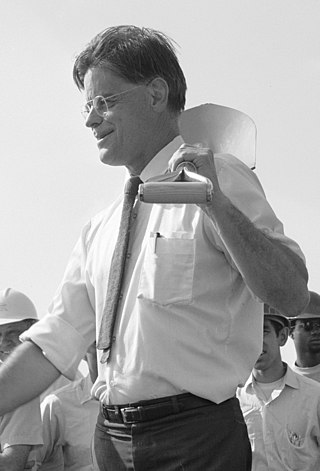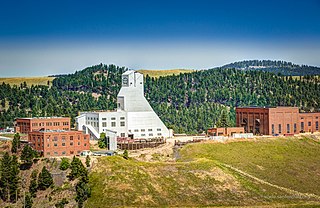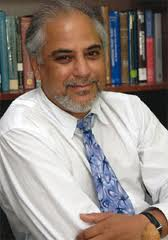
Leon Max Lederman was an American experimental physicist who received the Nobel Prize in Physics in 1988, along with Melvin Schwartz and Jack Steinberger, for research on neutrinos. He also received the Wolf Prize in Physics in 1982, along with Martin Lewis Perl, for research on quarks and leptons. Lederman was director emeritus of Fermi National Accelerator Laboratory (Fermilab) in Batavia, Illinois. He founded the Illinois Mathematics and Science Academy, in Aurora, Illinois in 1986, where he was resident scholar emeritus from 2012 until his death in 2018.

Fermi National Accelerator Laboratory (Fermilab), located in Batavia, Illinois, near Chicago, is a United States Department of Energy national laboratory specializing in high-energy particle physics.

James Watson Cronin was an American particle physicist.

Robert Rathbun Wilson was an American physicist known for his work on the Manhattan Project during World War II, as a sculptor, and as an architect of the Fermi National Accelerator Laboratory (Fermilab), where he was the first director from 1967 to 1978.

The Association of Universities for Research in Astronomy (AURA) is a consortium of universities and other institutions that operates astronomical observatories and telescopes.

The United States Department of Energy National Laboratories and Technology Centers is a system of laboratories overseen by the United States Department of Energy (DOE) for scientific and technological research. The primary mission of the DOE national laboratories is to conduct research and development (R&D) addressing national priorities: energy and climate, the environment, national security, and health. Sixteen of the seventeen DOE national laboratories are federally funded research and development centers administered, managed, operated and staffed by private-sector organizations under management and operating (M&O) contracts with the DOE. The National Laboratory system was established in the wake of World War II, during which the United States had quickly set-up and pursued advanced scientific research in the sprawling Manhattan Project.
The Presidential Early Career Award for Scientists and Engineers (PECASE) is the highest honor bestowed by the United States federal government on outstanding scientists and engineers in the early stages of their independent research careers. The White House, following recommendations from participating agencies, confers the awards annually. To be eligible for a Presidential Award, an individual must be a U.S. citizen, national, or permanent resident. Some of the winning scientists and engineers receive up to a five-year research grant.

The NOνA experiment is a particle physics experiment designed to detect neutrinos in Fermilab's NuMI beam. Intended to be the successor to MINOS, NOνA consists of two detectors, one at Fermilab, and one in northern Minnesota. Neutrinos from NuMI pass through 810 km of Earth to reach the far detector. NOνA's main goal is to observe the oscillation of muon neutrinos to electron neutrinos. The primary physics goals of NOvA are:
George Randolph Kalbfleisch was an American particle physicist.

Nigel Stuart Lockyer is a British-American experimental particle physicist. He is the current director of the Cornell Laboratory for Accelerator-based ScienceS and Education (CLASSE) as of May 1, 2023. He was the Director of the Fermi National Accelerator Laboratory (Fermilab), in Batavia, Illinois, the leading particle physics laboratory in the United States, from September 2013 to April 2022.

The Sanford Underground Research Facility (SURF), or Sanford Lab, is an underground laboratory in Lead, South Dakota. The deepest underground laboratory in the United States, it houses multiple experiments in areas such as dark matter and neutrino physics research, biology, geology and engineering. There are currently 28 active research projects housed within the facility.

Helen Thom Edwards was an American physicist. She was the lead scientist for the design and construction of the Tevatron at the Fermi National Accelerator Laboratory.

Swapan Chattopadhyay CorrFRSE is an Indian American physicist. Chattopadhyay completed his PhD from the University of California (Berkeley) in 1982.
The Deep Underground Neutrino Experiment (DUNE) is a neutrino experiment under construction, with a near detector at Fermilab and a far detector at the Sanford Underground Research Facility that will observe neutrinos produced at Fermilab. An intense beam of trillions of neutrinos from the production facility at Fermilab will be sent over a distance of 1,300 kilometers (810 mi) with the goal of understanding the role of neutrinos in the universe. More than 1,000 collaborators work on the project. The experiment is designed for a 20-year period of data collection.
The Richtmyer Memorial Award is an award for physics education, named for physicist Floyd K. Richtmyer and given annually by the American Association of Physics Teachers. Its recipients include over 15 Nobel Prize winners.

The Particle Physics Project Prioritization Panel (P5) is a scientific advisory panel tasked with recommending plans for U.S. investment in particle physics research over the next ten years, on the basis of various funding scenarios. The P5 is a temporary subcommittee of the High Energy Physics Advisory Panel (HEPAP), which serves the Department of Energy's Office of Science and the National Science Foundation. In 2014, the panel was chaired by Steven Ritz of the University of California, Santa Cruz. In 2023, the panel was chaired by Hitoshi Murayama of the University of California, Berkeley.
Science tourism is a travel topic grouping scientific attractions. It covers interests in visiting and exploring scientific landmarks, including museums, laboratories, observatories and universities. It also includes visits to see events of scientific interest, such as solar eclipses.

Boris Jules Kayser was an American theoretical physicist. He specialized in the study of neutrinos. He worked at the National Science Foundation for nearly thirty years before joining the US government research facility Fermilab. He retired from Fermilab in 2012. For five years, he was the editor of the peer-reviewed journal the Annual Review of Nuclear and Particle Science.

Kevin T. Pitts is an American high energy particle physicist. In addition to his faculty appointment at the University of Illinois at Urbana–Champaign, in 2021 he was appointed chief research officer at Fermilab National Accelerator Laboratory. His research interests have included the CDF experiment and the Muon g-2 experiment at Fermilab.
Arden Warner is a Barbadian-American particle physicist and inventor, working at the Fermi National Accelerator Laboratory (Fermilab), notable for the creation of a novel environmentally positive, magnetism-based method for cleaning up oil spills, now being developed by Fermilab and a company led by Warner.













